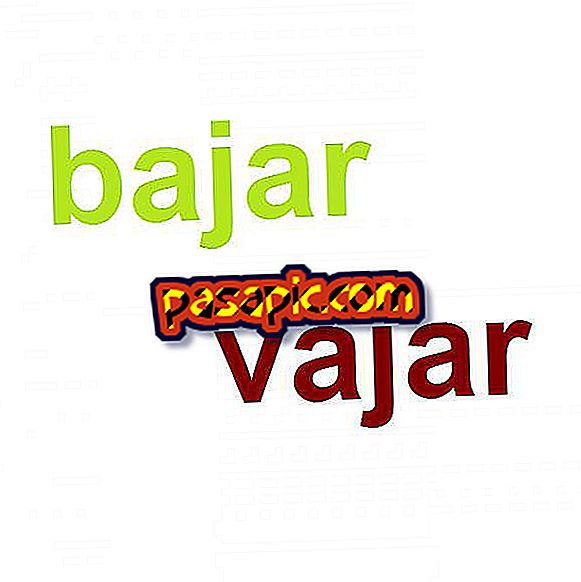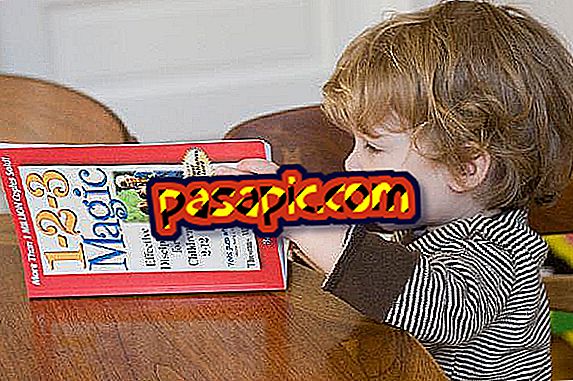How animals reproduce

One of the characteristics of the animal kingdom is its capacity for reproduction. Just as being born, growing and dying, reproduction is part of your life cycle. Not all reproduce in the same way, according to their characteristics and their environment, so in this article we explain how the animals are reproduced detailing the types of reproductions and the necessary conditions for them to occur.
Steps to follow:one
We will start talking about sexual reproductions, that is, that type of reproduction in which it is necessary that a female be fertilized by the sperm of the male to be able to become pregnant. Within this type of reproduction, there are animals that practice internal fertilization (as would be, for example, the case of people) or external fertilization ; Here we tell you the differences:
- Internal fertilization : the sperm fertilizes the egg when the male is inside the body of the female . The mammals, the birds, the insects and the reptiles are the ones that carry out this type of fecundation; just like humans. The operation of this process consists of the male meta sperm inside the ovum to cause the embryo to gestation.
- External fertilization : this occurs when the entry of the sperm into the egg takes place outside the body of the female ; This occurs especially in marine animals such as fish and amphibians. The procedure is that the female puts different ovules in the water and it is the male who spreads his sperm on them until they get fecundated.

two
The animals that practice sexual reproduction can be differentiated according to viviparous animals or oviparous animals; This depends on the way in which they have to gestate the embryo since there are some that do it internally, that is, inside the mother's belly the fetus develops (as in the case of people) and others that the development It is done externally, in eggs.
Here are the differences:
- Viviparous animals : those that give birth to their young ways are those that are known as viviparous. They are the animals that form the embryo inside the body of the mother and the fetus is fed by the umbilical cord that provides the food that the female takes. These animals are the mammals that are the ones that have their offspring with the natural process of childbirth and the duration of pregnancy as well as the number of offspring can be completely variable.
- Oviparous animals : apart from mammals, most animals practice a gestation external to the body of the mother, the offspring develops inside an egg containing the embryo and different layers that protect the offspring. When animals break the shell is when we can talk about the "birth" of these animals; As soon as they leave, it can happen that they are sufficiently independent to go on their own without the mother's help (for example, fish or reptiles) or, on the contrary, they need to take care of them. their mother until they get a little bigger (as is the case with birds).

3
Depending on how the offspring come from their respective places of fertilization (the mother's belly or the eggs) the animals can also be divided into different types depending on their development, be it direct or indirect. This simply refers to whether the animals resemble their adult form or not, that is, when they are born they seem the same as their mothers.
- Direct development : It is when newborns resemble their parents as soon as they are born; that is, they are the same animal but, simply, they are smaller. This is the case of humans, mammals and some birds.
- Indirect development : this occurs when the breeding that appears is very different in appearance to its mother. This is the case, for example, of the frogs that when they are born are tadpoles, something like little fish and that, later, they become frogs.

4
The asexual reproduction is the one that does not need two members of the same species but an animal can bring alive beings in the world without needing to be fertilized by an external one. The main characteristic of this type of reproduction is that genetics is not modified because there are not two channels but only one. There are several types of asexual reproductions:
- Bipartition : they are unicellular beings that split in two to create a new living being.
- Gemation : in a living being a bulge appears spontaneously that makes a new being appear. This is the case, for example, of marine sponges.
- Fragmentation : from one fragment of a living being another is created; For example, the arm of a starfish can produce the appearance of a new star.

5
Within the asexual reproduction there are two phenomena that take place on Earth and that should be mentioned in a separate case because they are different animal reproduction modes in which they do not need a second member to be able to have offspring:
- Hermaphroditism : this type of animal contains in itself the two sexes, the feminine and the masculine, reason why they alone can engender an embryo without need of any other member. This is the case, for example, of snails.
- Parthenogenesis : Consists in the development of an embryo from a part of the body without need to be fertilized. This type of reproduction occurs mainly in the arthropods (ants, spiders, etc.) although they also take place in fish or reptiles. The breeding they have is exactly the same as their genetic component because they do not have the intervention of any other organism.

- You can find detailed information on the network about some specific type of reproduction.
- There are many reproduction books on sale that can help you.


